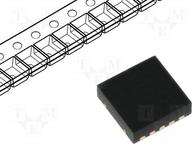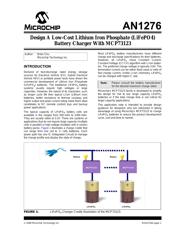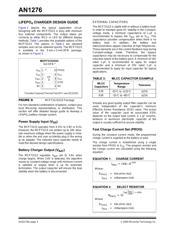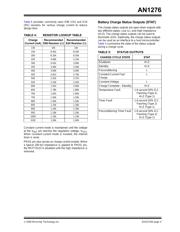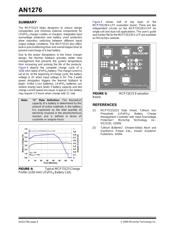herunterladen

© 2009 Microchip Technology Inc. DS01276A-page 1
AN1276
INTRODUCTION
Demand of fast-discharge rated energy storage
sources for Electrical Vehicle (EV), Hybrid Electrical
Vehicle HEV) or portable power tools have driven the
commercial development of Lithium Iron Phosphate
(LiFePO
4
) batteries. The traditional LiFePO
4
battery
systems usually require high voltages or large
capacities. However, the nature of its characters, such
as longer cycle life than typical Li-Ion (Lithium Iron)
batteries, better resistance to thermal runaway and
higher output and peak current rating make them ideal
candidates to RC (remote control) toys and backup
power applications.
The typical capacity of LiFePO
4
battery cells are
available in the ranged from 500 mAh to 2300 mAh.
They are usually rated at 3.2V. There are systems or
applications that do not require large capacity (multiple
cells in parallel) or high voltage (multiple cells in series)
battery packs. Figure 1 illustrates a charge cradle that
can range from one cell to ‘n’ cells batteries. Each
power path has one IC (Integrated Circuit) to manage
the charge profile and display the state of charge.
Most LiFePO
4
battery manufacturers have different
charge and discharge specifications for their batteries.
However, all LiFePO
4
share Constant Current-
Constant Voltage (CC-CV) algorithm with Li-Ion batter-
ies. The preferred charge voltage is typically 3.6V. The
termination current can be either fixed value or ratio of
fast charge current. Unlike Li-Ion chemistry, LiFePO
4
can be charged with higher C rate.
Microchip’s MCP73123 family is developed to simplify
the design for mid to low range capacity LiFePO
4
batteries or if the total charge time is not critical for
larger capacity applications.
This application note is intended to provide design
guidance for designers who are interested in taking
advantage of using Microchip’s MCP73123 to charge
LiFePO
4
batteries to reduce the product development
cycle, cost and time to market.
FIGURE 1: LiFePO
4
Charger Cradle Illustration of the MCP73123.
Author: Brian Chu
Microchip Technology Inc.
Note: Please consult the battery manufacturer
for the desired maximum charge rated.
MC P73123 MCP73123
Status Status
LiFePO
4
LiFePO
4
Design A Low-Cost Lithium Iron Phosphate (LiFePO4)
Battery Charger With MCP73123
Verzeichnis

